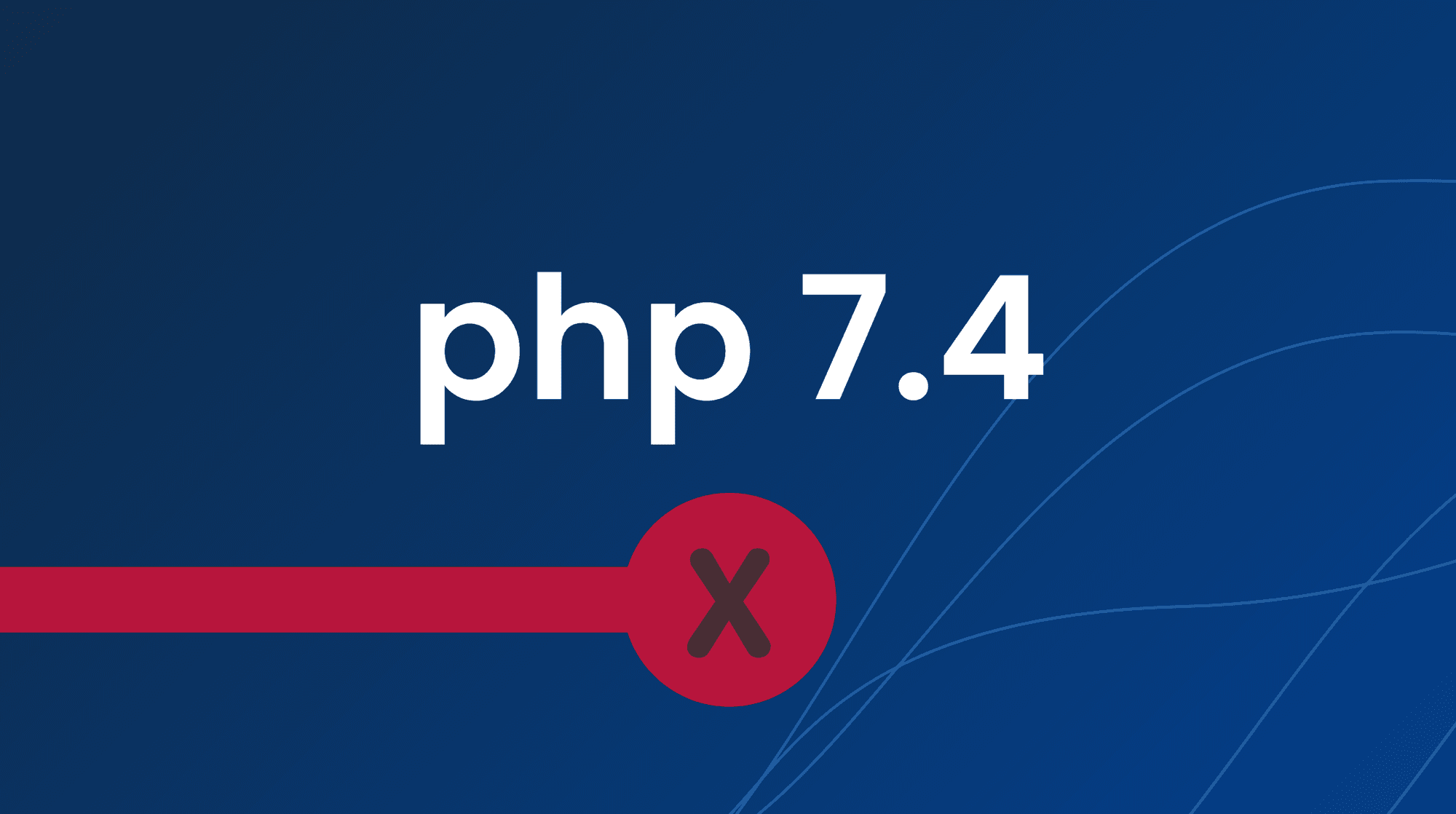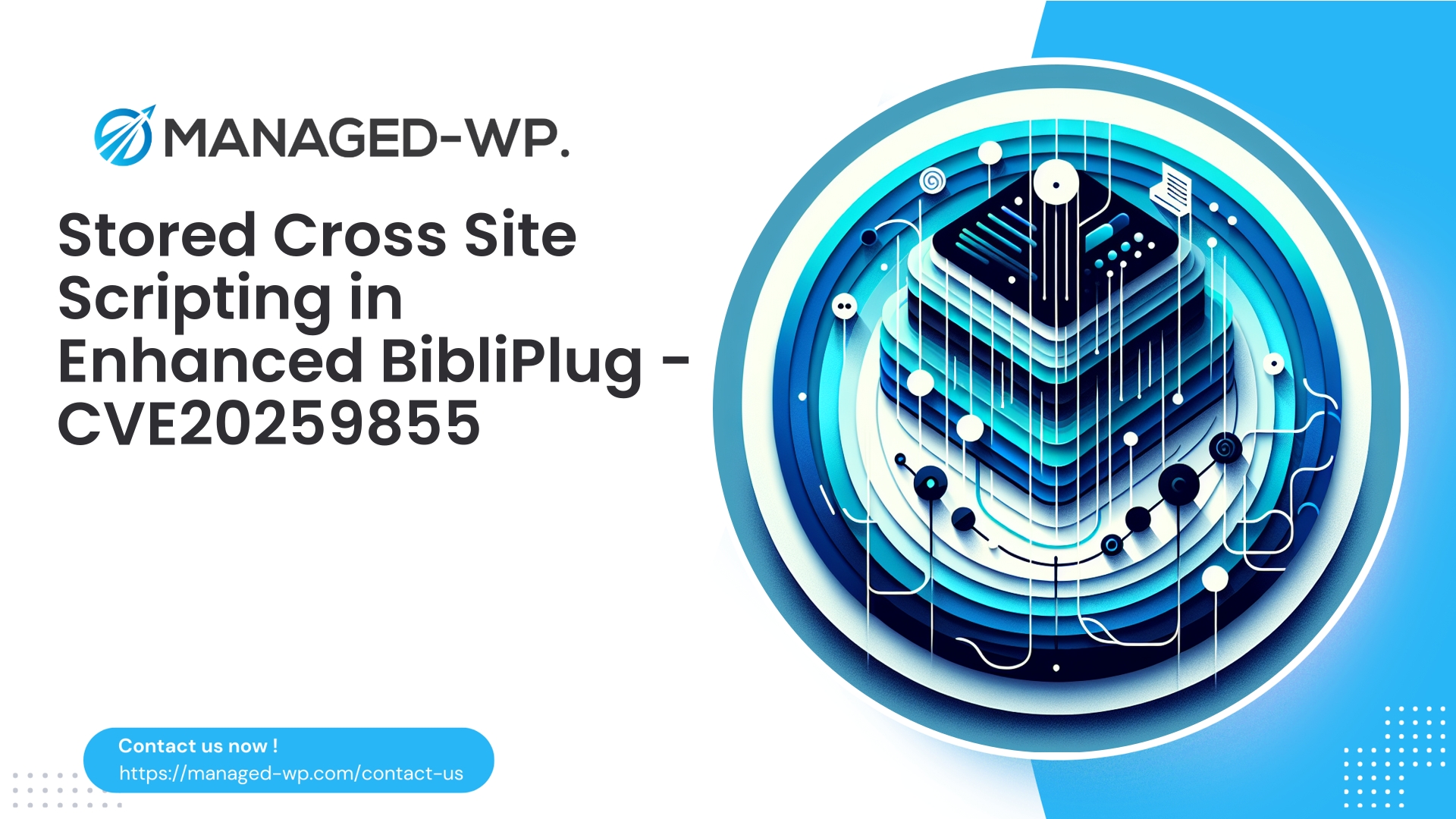| 插件名稱 | Azure Curve BBCode |
|---|---|
| 漏洞類型 | 已認證存儲型 XSS |
| CVE編號 | CVE-2025-8398 |
| 緊急 | 低的 |
| CVE 發布日期 | 2025-09-11 |
| 來源網址 | CVE-2025-8398 |
緊急公告:CVE-2025-8398 — Azure Curve BBCode (≤ 2.0.4) 中的已認證儲存型 XSS 漏洞及 Managed-WP 如何保護您的 WordPress 網站
發布日期: 2025年9月11日
CVE 參考編號: CVE-2025-8398
受影響的插件: Azure Curve BBCode 版本 2.0.4 及更低版本
嚴重程度評分: CVSS 6.5 — 透過 [url] 短代碼儲存的跨站腳本攻擊
需要權限: 貢獻者(或更高級別)
身為經驗豐富的美國網路安全專家,我們 Managed-WP 專注於 WordPress 安全防護,現在為您帶來一份關於影響 azurecurve BBCode 外掛程式的嚴重漏洞的詳細分析。該漏洞允許具有「貢獻者」或更高權限的已認證使用者透過插件注入惡意 JavaScript 程式碼。 [url] 短代碼。這些惡意程式碼會持久存儲,並在頁面或文章渲染時觸發攻擊。本安全公告概述了風險、檢測技術、即時補救措施、開發人員修復方案以及虛擬修補程式指南。
本簡報旨在為網站管理員、安全團隊和開發人員提供支援—為您提供實用的安全情報,以保護您的 WordPress 生態系統。
摘要-威脅情勢及您必須採取的措施
- 儲存型 XSS 漏洞 (CVE-2025-8398) 影響 azurecurve BBCode 外掛程式版本 ≤ 2.0.4。
- 擁有貢獻者等級存取權限的惡意使用者可以將有害腳本嵌入插件中。
[url]短代碼。這些腳本儲存在資料庫中,並在具有更高權限的使用者或網站訪客查看內容時執行。 - 這種持續存在的 XSS 攻擊向量能夠竊取身分驗證令牌、執行未經授權的管理員操作,以及向最終使用者傳遞惡意重定向或腳本。
- 目前,官方尚未發布補丁。網站擁有者必須立即採取保護措施:停用外掛程式、清理內容、限制使用者角色,或使用 Web 應用程式防火牆 (WAF) 實施虛擬修補。
為什麼這很重要: 在協作平台和多作者部落格中,貢獻者帳號十分常見。雖然這類用戶無法發佈內容,但他們仍然可以注入惡意程式碼,這些程式碼會在內容被他人審核或發佈時執行。儲存型跨站腳本攻擊(XSS)漏洞尤其危險,因為惡意程式碼會永久駐留在網站的儲存空間。
了解漏洞——技術細節
該漏洞源於對資料的驗證和輸出清理不足。 [url] 外掛程式中的短程式碼可以將 BBCode 語法轉換為 HTML 錨定標籤。具體來說,該插件:
- 接受未經驗證的使用者輸入,從而允許使用潛在危險的 URL 方案,例如
javascript:或事件處理程序,例如錯誤將被嵌入。 - 未能對 HTML 上下文應用正確的轉義和編碼,存在將可執行腳本注入屬性或元素內容的風險。
風險短代碼範例:
點擊我
如果使用此功能,則會渲染一個錨標記,該標記會在互動或頁面載入時執行 JavaScript,從而產生儲存型跨站腳本攻擊風險。
攻擊途徑包括:
- 惡意短代碼嵌入到以待處理或已發佈內容形式儲存的貼文或評論中。
- 在使用者個人資料、小工具或其他內容注入中使用短代碼。
主要風險在於,貢獻者可以嵌入程式碼,這些程式碼會在特權用戶查看時激活,從而成為一種強大的攻擊途徑。
真實世界的攻擊場景
- 管理員預覽風險: 投稿者提交了一篇惡意貼文。
[url]短代碼。當管理員預覽或編輯貼文時,腳本會在其瀏覽器上下文中執行,這可能會劫持管理員權限。 - 公眾剝削: 如果惡意貼文未被發現就發布,訪客可能會接觸到惡意程式碼,這些程式碼會將使用者重新導向到釣魚網站、注入廣告或破壞使用者會話。
- 小工具/個人資料注入: 該外掛程式在側邊欄或個人資料欄位中的短代碼處理可能會導致跨多個頁面的廣泛感染。
重要的: 儲存型 XSS 的持久性意味著,即使是未經批准的內容,如果被特權使用者預覽,也會構成風險。
如何檢測您的網站是否受到影響
- 檢查插件版本: 登入 WordPress 管理背景 → 插件,確認是否已安裝 azurecurve BBCode ≤ 2.0.4。
- 在資料庫中搜尋短代碼:
- 掃描
wp_posts和wp_postmeta表格[url短代碼用法: SELECT ID, post_title, post_author FROM wp_posts WHERE post_content LIKE '%[url%';- 另請搜尋
wp_comments,wp_usermeta以及可疑內容的組件選項。
- 掃描
- 尋找混淆有效載荷: 搜尋表示以下資訊的編碼字串
javascript:或 HTML 事件處理程序(錯誤=,onload=這表明有人試圖繞過檢測。 - 檢查日誌是否有可疑活動: 查看 Web 伺服器存取和管理活動日誌,是否存在來自貢獻者帳戶的異常 POST 請求或預覽操作。
- 執行惡意軟體掃描: 使用安全工具識別內容欄位中的內聯腳本或危險屬性。
如果發現跡象,請將您的網站視為已被入侵,並進行清理和隔離。
立即採取的保護和補救措施
網站管理員和經理應立即採取以下措施:
- 停用或移除外掛程式:
- 如果並非必要,請移除 AzureCurve BBCode。停用該插件將停止後續的短代碼處理。
- 注意:停用此功能不會從資料庫中刪除現有的短代碼內容。
- 限制貢獻者存取權限:
- 暫時降低具有「貢獻者」角色的使用者的權限,或暫停可疑帳戶,等待清理。
- 審核與清理內容:
- 檢查所有最近創建的帖子和評論,查找惡意短代碼並將其刪除或消除。
- 執行資料庫清理:
- 備份資料庫。
- 執行手動或腳本清理程序,清除帖子和元資料中的有害有效載荷。
- 輪換憑證:
- 如果懷疑管理員帳號遭到入侵,則重設密碼並撤銷令牌。
- 啟用WAF和虛擬補丁:
- 設定Web應用程式防火牆規則,立即阻止攻擊嘗試。
- 如果您使用 Managed-WP 服務,請啟動我們的虛擬修補程式功能,在等待官方外掛程式更新期間保護您的網站。
- 通知與監控:
- 通知您的安全團隊和利害關係人,然後密切監控日誌和警報,以防後續攻擊嘗試。
開發者建議:安全處理短程式碼
插件開發者和網站整合商應實施嚴格的輸入驗證和輸出清理。主要建議包括:
- 務必驗證並清理短代碼屬性,切勿盲目信任使用者輸入。
- 限制可接受的 URL 方案,僅允許使用安全的協議,例如
http,https, 和mailto. - 應用符合上下文的轉義:使用
esc_attr()對於屬性,esc_url()對於網址,以及esc_html()用於正文內容。 - 利用
wp_kses()在允許使用有限的HTML時,會採取嚴格的政策。
安全短代碼處理程序範例(概念性):
/**
* Secure handler for [url="..."]link text[/url]
*/
function managed_wp_safe_url_shortcode($atts, $content = null) {
$atts = shortcode_atts( array(
'href' => '',
), $atts, 'url' );
if (empty($atts['href']) && isset($atts[0])) {
$atts['href'] = $atts[0];
}
$raw_href = trim( $atts['href'], "'"" );
$allowed_protocols = array( 'http', 'https', 'mailto' );
$parsed = wp_parse_url( $raw_href );
$scheme = isset( $parsed['scheme'] ) ? strtolower( $parsed['scheme'] ) : '';
if ( $scheme === '' ) {
$safe_url = esc_url_raw( $raw_href );
} else {
if ( ! in_array( $scheme, $allowed_protocols, true ) ) {
return esc_html( $content ?: $raw_href );
}
$safe_url = esc_url_raw( $raw_href );
}
$escaped_url = esc_url( $safe_url );
$link_text = $content !== null ? wp_kses_post( $content ) : $escaped_url;
return '<a href="' . $escaped_url . '" rel="noopener noreferrer">' . esc_html( $link_text ) . '</a>';
}
add_shortcode( 'url', 'managed_wp_safe_url_shortcode' );
這種方法透過嚴格的協定限制和適當的轉義來防止腳本注入。
虛擬補丁和WAF規則建議
如果立即移除或更新外掛程式不可行,則應使用 WAF 規則來遏制攻擊途徑。例如:
- 堵塞
javascript:,數據:, 和vbscript:方案內部[url]短代碼屬性。 - 阻止內聯事件處理程序
錯誤=,onload=, 或者點選=透過短代碼參數嵌入。 - 偵測並阻止試圖繞過過濾器的混淆或編碼的惡意腳本。
- 提醒:大量貼文使用投稿者角色創建了包含可疑短代碼的貼文。
ModSecurity 規則範例片段:
SecRule REQUEST_BODY "(?i)\[url[^\]]*(=|href=)['\"][^'\"]*(javascript:|data:|vbscript:)" \ "id:123456,phase:2,deny,log,msg:'阻止 azurecurve BBCode URL"
重要的: 首先在非阻塞模式下測試這些檢測,以調整誤報率。
安全移除惡意儲存的有效載荷
- 先備份: 清理資料庫之前,務必先匯出資料庫。
- 手冊審查: 檢查被標記的帖子,刪除或重寫有問題的短代碼內容。
- 透過腳本進行消毒: 對於大量清理,請使用受控正規表示式替換來消除惡意短程式碼屬性。偽 PHP 程式碼範例:
$posts = $wpdb->get_results("SELECT ID, post_content FROM $wpdb->posts WHERE post_content LIKE '%[url%'"); foreach ( $posts as $ )) foreach ( $posts as $ )) preg_replace('/\[url[^\]]*(=|href=)(["\'])(.*?)(\2)\]/i', '[url_removed]', $p->post_content); if ($clean !== $p->post_content); if ($clean !== $p-14) array('post_content' => $clean), array('ID' => $p->ID)); } }
- 將惡意錨點替換或清理為安全文字或 URL。
- 請重新掃描您的網站,以確認所有惡意程式碼已刪除。
事件後回應指南
- 調查期間,將網站置於維護模式,隔離流量。
- 輪換所有管理員密碼並使所有活動會話失效。
- 審核是否存在未經授權的管理員帳戶、主題/外掛檔案修改以及可疑的排程任務。
- 進行全面的惡意軟體掃描,必要時聯絡專業事件回應團隊。
- 只有在確認漏洞和受損情況已解決後,才能從乾淨的備份中復原。
為什麼CVSS評分可能低估風險
CVSS 評分 6.5 分和「低」嚴重性評級並不能完全反映 WordPress 環境中存在的複雜風險。增加風險的因素包括:
- 能夠注入已儲存有效載荷的貢獻者角色的普遍性。
- 管理員多久會預覽或與投稿人內容互動一次?
- 在網站的常用區域(例如小部件或個人資料)使用短代碼。
鑑於網站完全被攻破的風險,請高度重視此漏洞並予以處理。
未來預防的最佳實踐
致網站所有者:
- 限制高風險使用者角色並強制執行審核工作流程。
- 維護WAF解決方案並啟用虛擬補丁。
- 嚴格管控插件庫存和更新計畫。
致插件開發者:
- 嚴格驗證並清理所有使用者輸入。
- 安全地根據上下文轉義輸出。
- 限制URL協定並實施白名單機制。
- 進行安全審查,並加入自動化 XSS 測試。
- 建立及時的安全揭露流程和修補程式更新周期。
建議的48小時緩解計劃
第0天:
- 識別受影響的站點,azurecurve BBCode ≤ 2.0.4。
- 立即停用外掛程式或啟用WAF虛擬修補。
- 開始掃描是否有惡意短代碼使用量。
第一天:
- 審核標記內容並進行清理或刪除。
- 輪換憑證和會話令牌。
- 如果偵測到入侵,立即啟動事件回應。
第2-7天:
- 持續監控日誌和WAF警報。
- 發布後部署供應商補丁或永久性程式碼修復程式。
- 更新安全性策略和事件文件。
Managed-WP 如何保護您
Managed-WP 透過專家精心策劃的 WAF 規則集和虛擬修補程式提供即時防禦,阻止針對此漏洞的攻擊嘗試。
- 在防火牆層阻止危險的 URL 方案和編碼後的有效載荷。
- 阻止來自貢獻者的可疑 POST 請求建立包含惡意短代碼的內容。
- 提供持續監控並發出警報,以偵測攻擊企圖。
- 提供自動化清理指導和內容修復支援。
虛擬補丁是對官方插件修復的補充,但不能取代官方插件修復。插件更新可用時,請及時套用。
永久解決方案開發人員檢查清單
- 將所有字串連接替換為符合上下文的轉義函數。
- 使用白名單批准的 URL 協議
wp_allowed_protocols或自訂驗證器。 - 編寫自動化測試來檢測注入嘗試。
- 記錄安全假設並對維護人員進行培訓。
- 發布安全公告並協調負責任的資訊揭露。
入侵指標 (IoC)
- 內容包括
[url]短代碼嵌入javascript:或者數據:網址。 - 存在
<script內容或元資料中的標籤或事件處理程序。 - 管理員使用者建立異常、主題/外掛程式變更異常或未經授權的計劃操作異常。
- 造訪受影響頁面後,出現異常的出站網路流量。
使用 Managed-WP 的免費安全計劃,立即獲得保護
Managed-WP 提供強大的免費安全方案,幫助您立即開始保護您的 WordPress 網站:
- 託管防火牆和 Web 應用防火牆,用於阻止已知和新興攻擊
- 無限頻寬保護,無任何隱藏費用
- 即時惡意軟體掃描,偵測可疑的儲存內容
- 緩解措施涵蓋範圍與 OWASP 十大風險相符
立即報名: https://my.wp-firewall.com/buy/wp-firewall-free-plan/
如需自動清除惡意軟體、IP 控制和詳細的月度報告等增強功能,請考慮 Managed-WP 的標準版或專業版套餐,以滿足您的需求。
最後的想法
這次事件凸顯了當插件未能妥善處理不受信任的輸入時,受信任使用者角色所帶來的嚴重安全風險。完善的安全防護措施——包括角色管理、外掛程式審核和虛擬修補程式——對於保障 WordPress 環境的安全至關重要。
立即停用存在漏洞的插件,清理儲存的內容,限制貢獻者權限,輪換憑證,並部署防火牆保護。
如果您負責管理多個 WordPress 部署,請將虛擬修補和集中管理作為基本防禦措施,從而在等待供應商修補程式期間大幅降低風險。
如需漏洞評估、虛擬修補程式配置或資料庫掃描方面的協助,Managed-WP 支援團隊隨時待命。立即加入我們的免費計劃,開始保護您的網站: https://my.wp-firewall.com/buy/wp-firewall-free-plan/
保持警惕,嚴格控制角色,並執行安全最佳實踐——因為防止安全漏洞始於積極主動的管理和持續的監督。



















